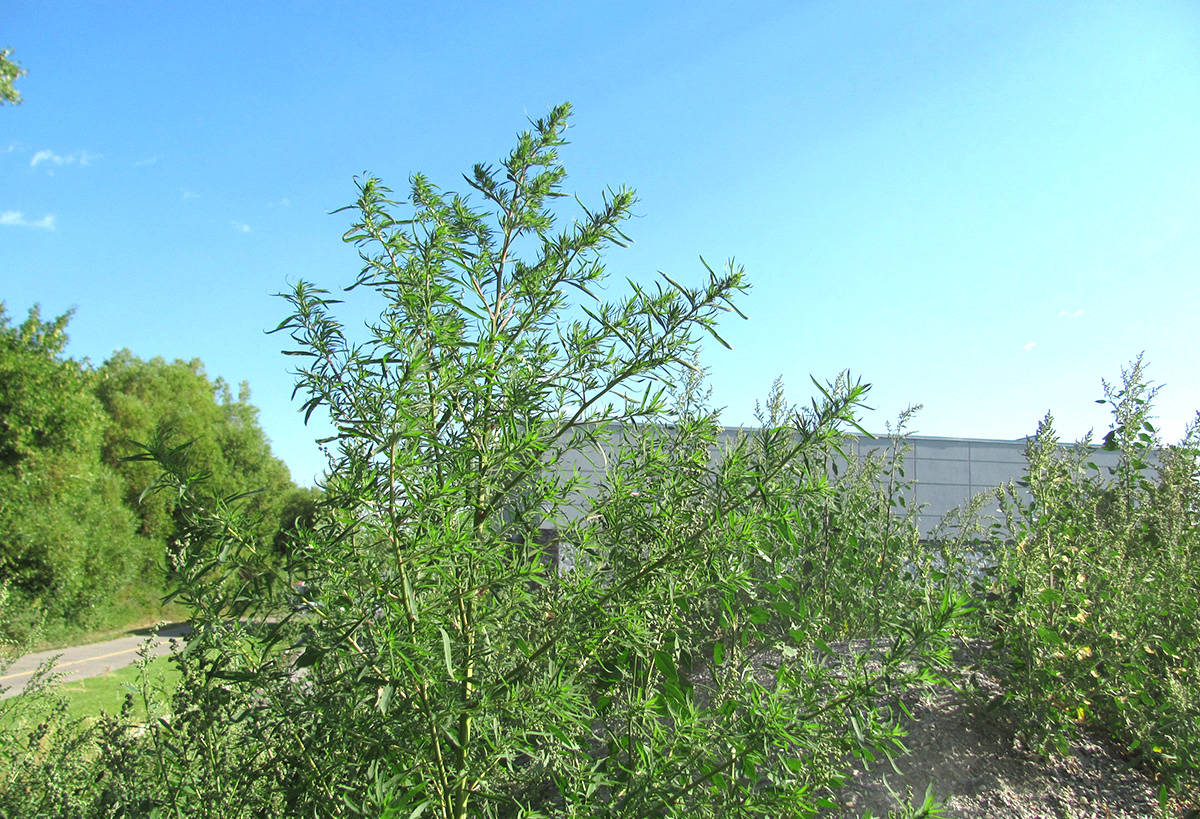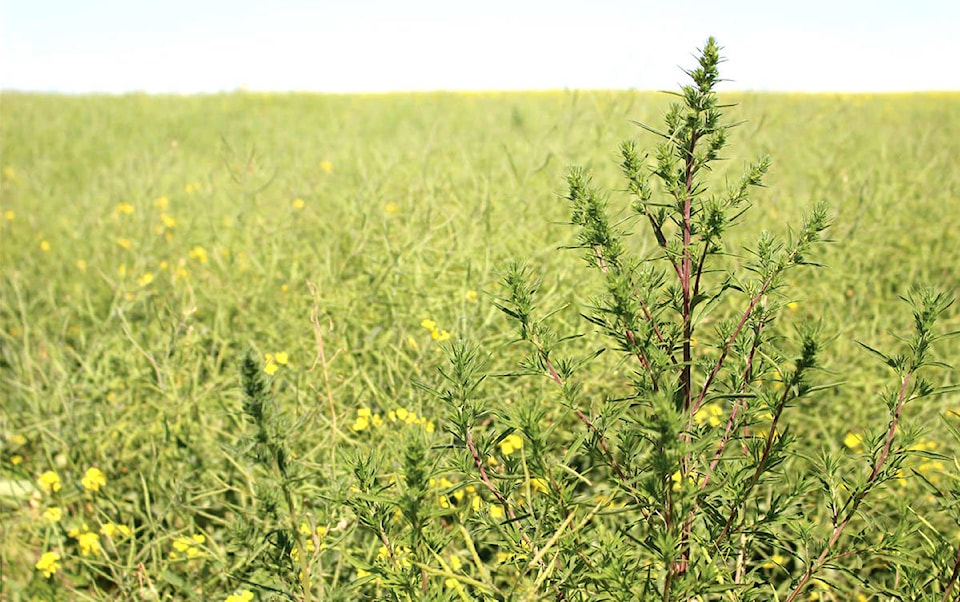Kochia (ko-chee-ah), the bushy tumble weed that sounds like a sneeze.
Some of Kochia’s akas are: Summer Cyprus, Burning Bush and Goosefoot.
This Eurasian plant, with its tiny green flowers and reddish stems, was brought to North America as an ornamental and as dry land forage that can prosper and spread during drought conditions.
Each of Kochia’s 25,000 tiny, green, petal-less flowers produces a single, oval, brown, grooved seed.
Its hairy grey-green, grass- blade shaped leaves often turn purplish-red in the Fall.
The toxic chemicals that mature Kochia can produce may cause liver or kidney damage to livestock, so dry-land farmers are careful to not let this plant be more than 50 per cent of the diet for cattle and sheep.
Kochia is tap-rooted, so young plants can be easily removed with a digging tool.
Kochia seeds rarely survive more than a year in soil, making it an easier plant to control than knapweed — whose seeds can still germinate after decades in the ground.
Kochia was declared an invasive weed in Cranbrook two years ago, and weed contractors have targeted it since.
Kochia is another tumbleweed, like Baby’s Breath, that can spread its seeds far downwind, as it rolls along roadsides and across range, pasture, disturbed areas and gardens. Kochia has infected every western US state and all western Canadian provinces and is developing resistance to many herbicides, including Roundup.
The best control approach is to pull young Kochia plants and garbage them before they can spread seeds and herbicide resistance in our local communities.
Remember to wash your vehicles before returning home from summer or fall trips, so you don’t help invasive weeds to spread their seeds.
Weed Warrior Frank

